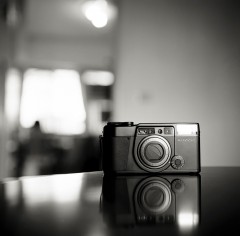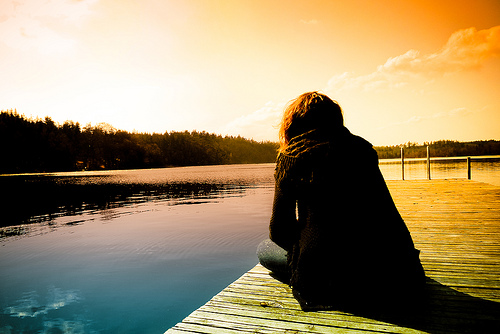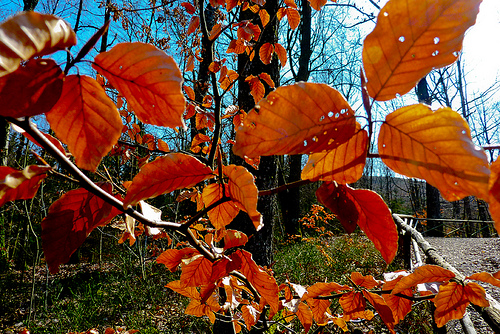
Compact cameras are portable, easy to use and loaded with all sorts of features. They are easy to sneak around and are the most used cameras in the world. Nikon, Canon, Sony, Samsung; all the major market players are striving for getting the best and distinct features to make photography an excellent beginning for you. A compact camera not only comes in handy for almost all the occasions, it also produces great results which can even put a DSLR to shame. Here are a few tips for the compact camera owners to help them compete with the professionals with this handy little photography equipment.
-
Familiarize Yourself With The Buttons And Controls
Knowing your camera in and out helps you in efficiently using the photo-gear (or any other equipment for that matter) at the first place and also enables you to make good photographs. You can learn about the functions and fancy features provided by your compact camera through the user manual. Read through the manual even before picking it up for the very first shot. The user manual comes in handy for gaining a sound knowledge about the various modes, manual settings options and the features provided by the compact camera you own. Try to stick to the basics and get used to the controls on the camera. Pressing the shutter release is only a small part of the entire process of photographing.
-
Experiment With Various Modes Provided
Even though small in size, compacts offer all the features and functionality required for mastering the art of photography. The modes provided by the compacts vary from manufacturer to manufacturer. Some of the most prominent modes are:
- Auto-mode: Use this mode for shooting with automatic settings (settings as set by the camera).
- Program Auto Mode: In this mode camera offers you to change the settings while controlling the exposure automatically.
- Landscape Mode: This mode comes in handy for shooting landscapes where the entire scene is required to be in focus (for attaining high depth of field).
- Soft Snap Mode: This mode enables you to keep the subject in focus while blurring the background details in order to get a shallow depth of field.
- High Sensitivity Mode: The camera in this mode boosts up the ISO to result in getting right amount of exposure in low light.
- Night Mode: The compact camera offers the night mode to ease photographing at night in the low-ambient light. The camera in this mode tries to collect the light by keeping the shutter open for a longer duration.
- Portrait Mode: This mode comes in handy for capturing portraits in low light. The camera triggers the flash for exposing the subject well.
There can be several other modes as well, varying with the model-make, manufacturer and the fancy features offered by your pocket camera. Using the right mode as per the requirement of the scene is the key to getting the best results.
-
Composition
With compact cameras you can easily compose the scene on the LCD itself. Using the LCD view while composing the photo simulates the results which you get in the final shot.
- Learn To Use The Grid: Almost all compact cameras show you a grid to help you align the scene vertically, horizontally and help you place the subject on the frame. This offers the flexibility of framing the shots in rule of thirds or the golden ratio (by dividing the LCD frame in nine equal parts). You can master the art of composition if you can get accustomed to utilizing this grid while taking the photos.
- Learn To Use Histograms: Turn on the setting for displaying histogram while composing enables you to pre-plan the scene in terms of highlights, shadows and mid-tones and helps you get the right exposure on the subject.
-
Know The Camera Specific Features
Compact cameras often have special features which are missing even from professional cameras. An example is the face-detection feature or smile-detection function. Familiarize yourself with these special tools at your disposal and use them creatively. Consciously make an effort to start using these features as it will go a long way in adding to your photos.
-
Zoom-in
Zooming in and framing the tightly cropped images results in good photographs. The compact cameras offer the optical zoom in the range of 3x-5x or more, which enables you to fill the frame with essential details (and eliminating the rest of the clutter and distractions in the scene). I prefer zooming in and getting close to the subject in the range of 2x-4x (depending on the physical properties of the subject). Also, even though compacts do not offer the flexibility of changing the lenses, they may offer some lens modes like panoramic etc. My compact camera offers me wide-angle lens view and telephoto lens view. Just find out if your camera also offers the lens mode. If it does you can use these modes to justifiably capture the scene or the subject. Tune your camera to wide-angle lens mode when photographing landscapes and increase your zoom-range by turning it to telephoto lens (which ensures photographing the subject without getting closer to the subject).
-
Wait For Camera To Process Data
One of the tricky things is the technique of using the shutter release button. I’ve often seen people pressing the shutter release and then turning the camera to check the result on the LCD screen. This can totally kill the shot especially in dark environments. It’s one of the primary reasons why one gets blurry images. Practice to keep the camera still one second before and after pressing the shutter release. This gives camera to make the exposure and allow the shutter to close before the camera is moved. Remember this limitation when you are taking the photographs and do not move or shake the camera till the image is finally processed. Optionally you can prefer to rest the camera on the stable surface (or you can even consider a tripod) to reduce the chances of camera shakes and blurs.
-
Control The Settings
You can get good and professional photographs (to an extent) with compacts as well. Just play around with the settings and observe the impact of the settings on the photographs.
- Settings Menu: The settings menu provides the shooting settings to help you tinker with the basic settings like turning on the AF illuminator, grid lines, auto review and setting the values for AF mode, digital zoom and choosing lens view, etc. These settings come in handy for composing the frames, but does not allow to take complete control of the camera. To make changes to the base settings (i.e, if you are well versed with photography terminology), you can switch on to program auto mode for manual settings.
- Manual Settings: The way DSLRs provide the manual mode to take the control of the equipment, compact cameras provide the Program Auto mode. This can be inferred as the semi-manual mode. It opens up a plethora of options to choose from. Set the camera to program auto mode to can turn on (or off) the features offered by your camera. Here you can choose from several options provided for VGA display, face detection, exposure compensation, ISO sensitivity, white balance settings, intensity of flash, red eye reduction mode, color mode and so on.
-
Take Care Of The Lens
Of all the compact cameras I’ve seen, I’ve noticed finger-prints on almost all of their lenses. Maintaining the lens should be a priority. To get good images, you have to keep the lens safe and sound. Clean the lens on a regular basis to maintain the picture quality of the camera. You can use a piece of cotton cloth or a cotton swab for cleaning the camera lens (and thus keep it away from dust particles).
-
Try To Use Natural Light
One major limitation with using compacts is the built-in flash. The camera senses the low-ambient light and fires up the flash. The flash tends to cast hard light on the scene and creates unflattering shadow. It also disturb the white-balance of the image. All most all the auto modes of the compact camera trigger the flash (whether required or not). However this can be solved by making effective use of natural light.
-
Handle Carefully
Owning a compact camera can be marked as the beginning of your photography excursion. It entices and lures you to enter the beautiful world of capturing the still life. Its small size and portability is an advantage over other digital cameras. It comes in handy for all the situations; be it an official tour or a family outing or an event (or occasion). The same reason applies to it being handled carelessly. Instead of using a proper kit bag for it, people find it easy to fit them in their pockets (which can adversely affect your priced possession).
Compact cameras offer a wide variety of features to set a distinct mark in the market is obsessed with small, handy and portable cameras. The range of compact cameras in the market offer timers, smile shutter, video recording, self-portrait mode with 10-15 megapixels; all set to give stiff competition to the bulky DSLRs (and to justify “why your camera doesn’t matter“).
What do you like about your compact camera?





very good advise and tips….bravo